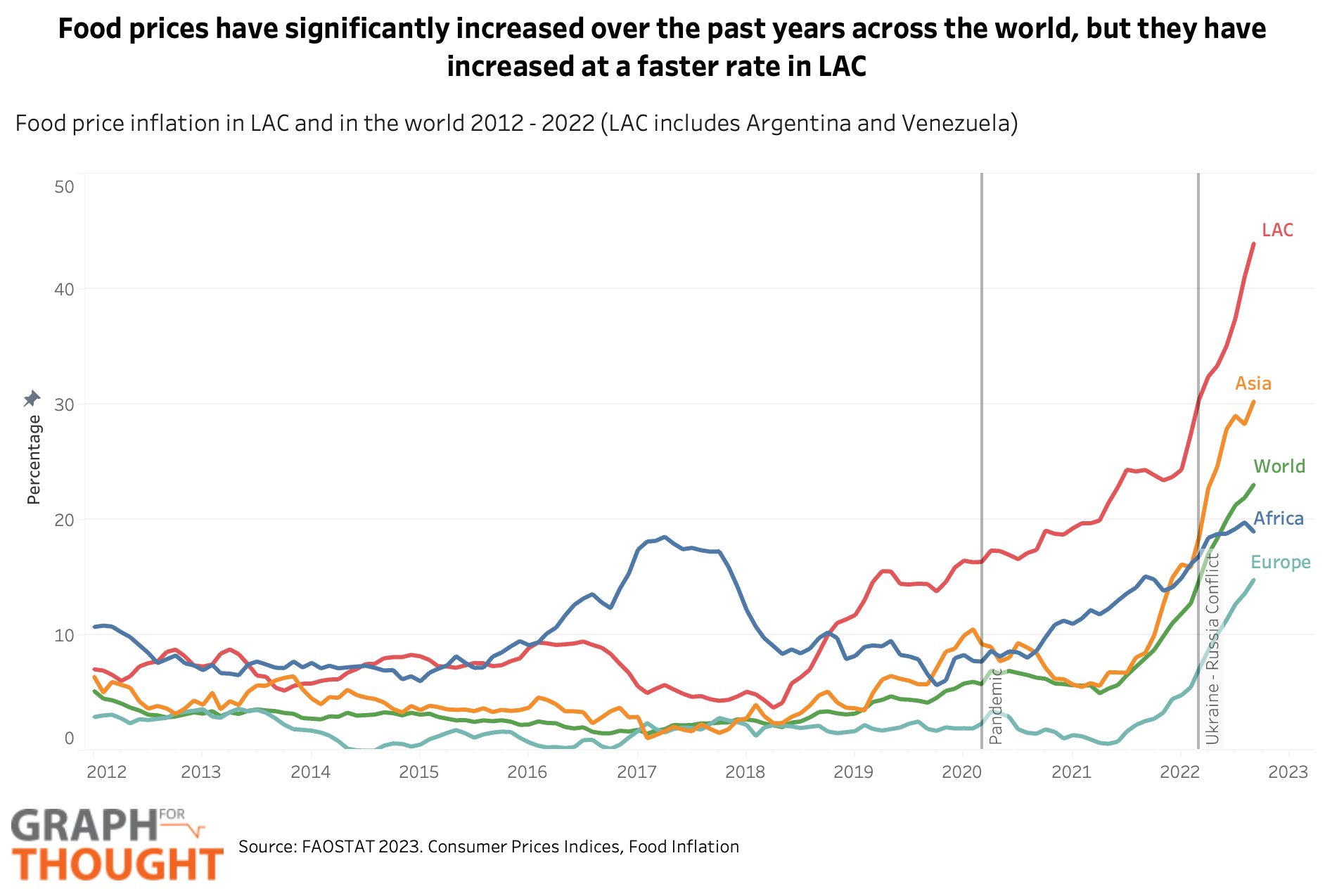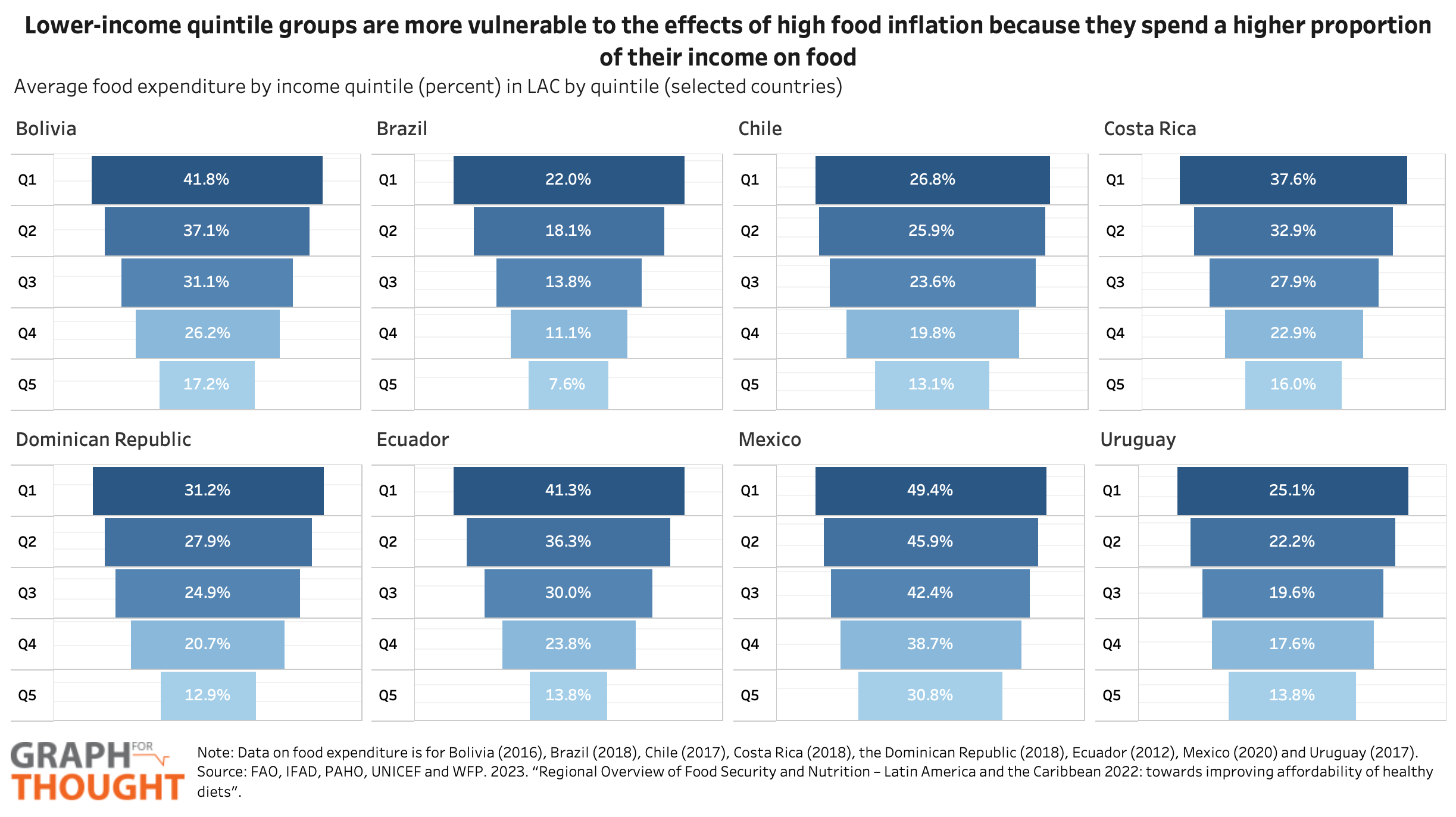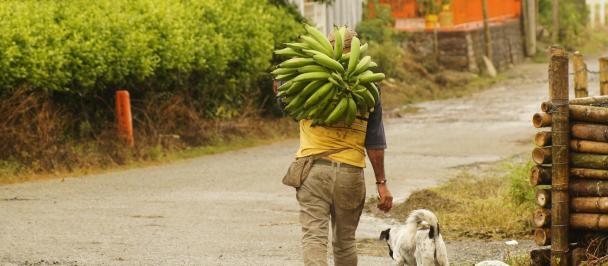The unabated increase in the cost of food in Latin America and the Caribbean
“El costo de la vida, sube otra vez”
April 11, 2023
Over a year into the Ukraine-Russia conflict, and more than three years into the COVID-19 pandemic, the far-reaching implications of these overlapping crises continues to weigh on Latin American and the Caribbean societies, as they concurrently work to address long-term issues such as inequality, poverty, and food insecurity.
This #GraphForThought utilizes data from FAOSTAT to look at the cost of food in the region, and how its fared in the last few years. The figure shows that food prices have been increasing in LAC since before the onset of the pandemic and growing at a faster rate compared to other regions.
Food inflation in the region starts to spike in 2018 when the region experienced rising prices of agricultural inputs and depreciation of local currencies. At the onset of the Ukraine-Russia conflict in March 2022, food inflation in the region reached 30.4%, an 11% increase from the previous month and a 55% increase compared to the same month in 2021. The food inflation rate in LAC increased to 43.9% by September 2022, representing an additional increase of 44% compared to March 2022.
While food inflation has increased across the world, the magnitude of the increase in LAC is much higher than in other regions. It should be noted that since 2018, in some Latin American countries, such as Argentina and Venezuela, food prices have skyrocketed due to high inflation and the depreciation of the local currency, which has influenced the regional average.

These hikes do not affect all households in the same way. The most vulnerable populations, including the lowest-income households are disproportionately affected by higher food inflation due to their larger allocation of budget towards food expenses.
Based on data from the Regional Overview 2022 report from national central banks for selected countries in LAC, lower-income quintile groups spend between 22% and 50% of their budget on food, while higher-income quintiles, except for Mexico, spend less than 17%. High inflation rates reduce households' purchasing power, particularly in lower-income quintiles where a significant portion of the budget is allocated to food, thereby threatening food security and ability to afford nutritious food.

Governments in Latin America and the Caribbean have implemented new spending and tax policies to address rising energy and food prices, including, price stability funds. However, evidence has shown that these energy subsidies tend to disproportionately benefit higher-income groups. In some countries, these price increases are one of the factors that sparked protests from various sectors and political organizations, forcing governments to take action.
With overlapping crises and the aftermath of the pandemic, it is crucial for countries to address the deep vulnerabilities in their food systems to ensure food security. According to the FAO, the number of people experiencing hunger worldwide in 2022 is projected to rise by 7.6 to 13 million, with an estimated increase of 350,000 to 640,000 individuals in the region. During the period from 2019 to 2021, which also saw the social and economic impacts of the COVID-19 pandemic, hunger in the region increased by 13.2 million people.
To address a potential food security and hunger crisis in LAC, countries can implement a range of integrated policy responses. Agricultural support programs, such as providing farmers with seeds, fertilizers, and tools, as well as training and infrastructure such as irrigation systems, can help improve food production.
Social protection policies, such as school feeding programs, food vouchers, and cash transfers, can help low-income population access nutritious food. Price regulation policies can ensure that food is available and accessible at affordable prices.
Finally, countries can establish long-term strategies to transform agricultural and food systems, with a focus on addressing high food inflation rates that can reduce households’ purchasing power and threaten food security. By taking action to address food insecurity in a comprehensive, multidimensional, and sustainable way, countries can advance to ensure that all citizens have access to nutritious and affordable food.


 Locations
Locations



